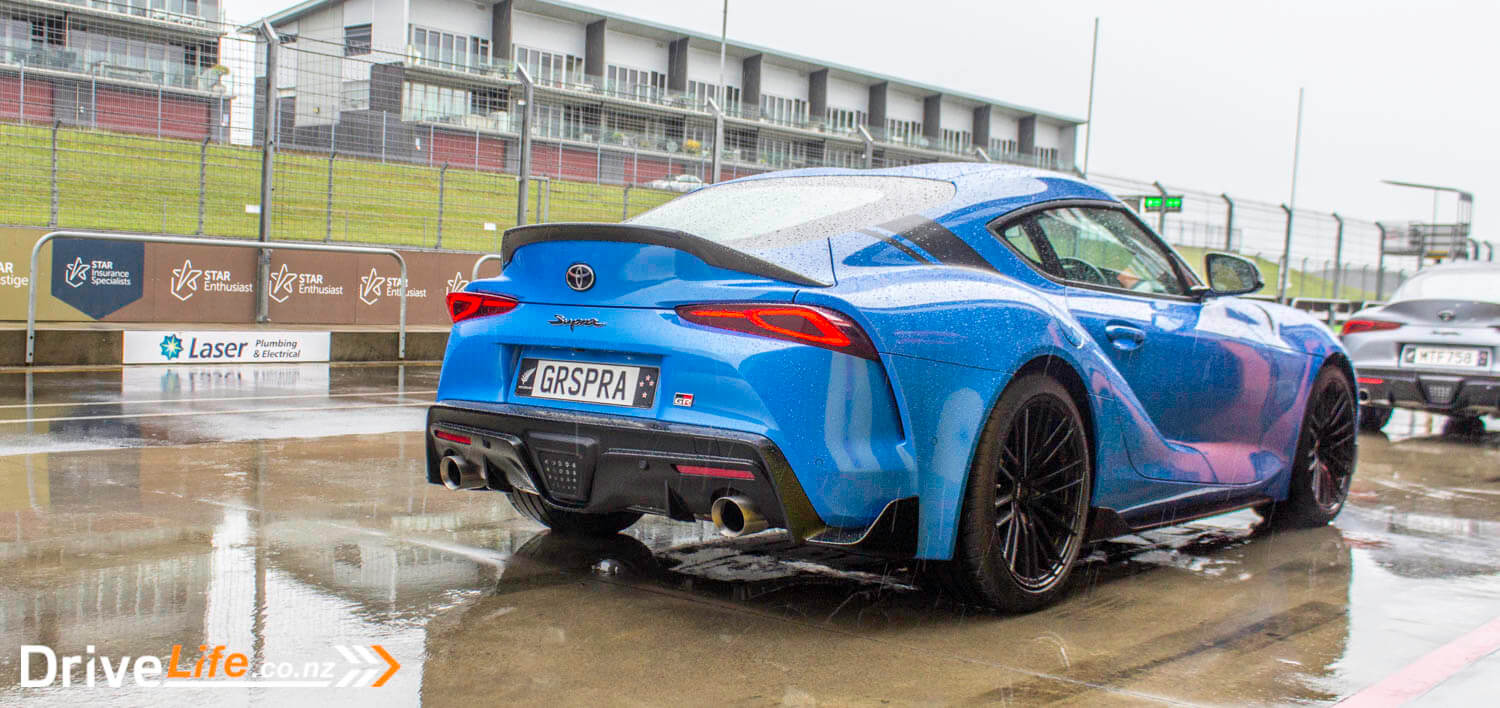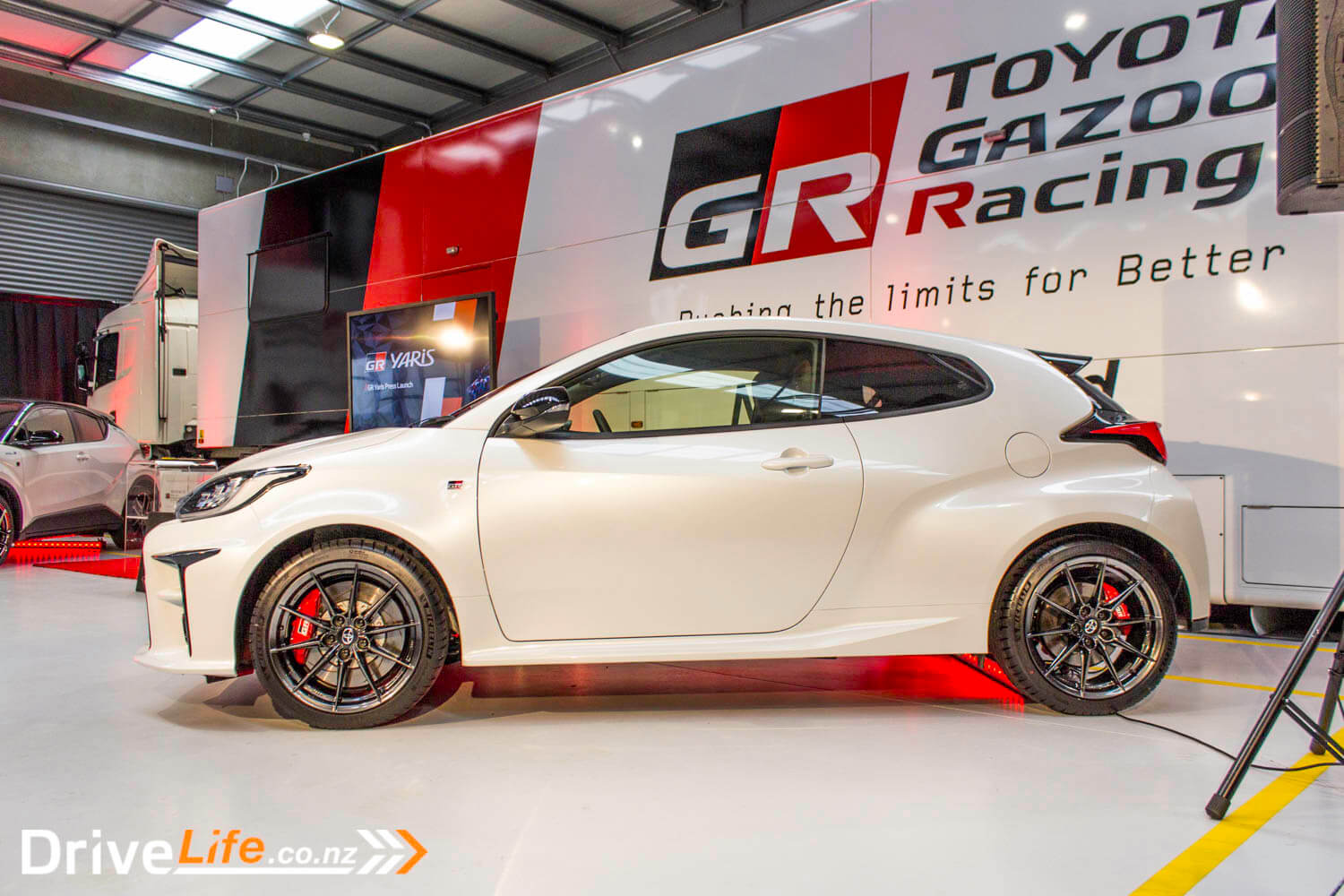They couldn’t be more different. Bred from decades of engineering development, the GR Supra has an aura around it, almost a halo, as car enthusiasts lust after owning any Toyota Supra, let alone the latest model. Even Akio Toyoda, the President of the company, has said, “Supra is like an old friend that holds a special place in my heart”.
It’s been 21 years since we last saw a new Supra for sale, so hopes are high that this is a worthy successor, and now we have the more powerful GR model on sale in New Zealand.
And then there’s the GR Yaris. It’s Bart Simpson to the Supra’s Sean Connery. That’s what happens when you throw a 1.6-turbo, a six-speed manual ‘box, AWD, and some famous names behind its development, like Tommi Makinen Racing and Toyota’s GAZOO Racing World Rally Team.
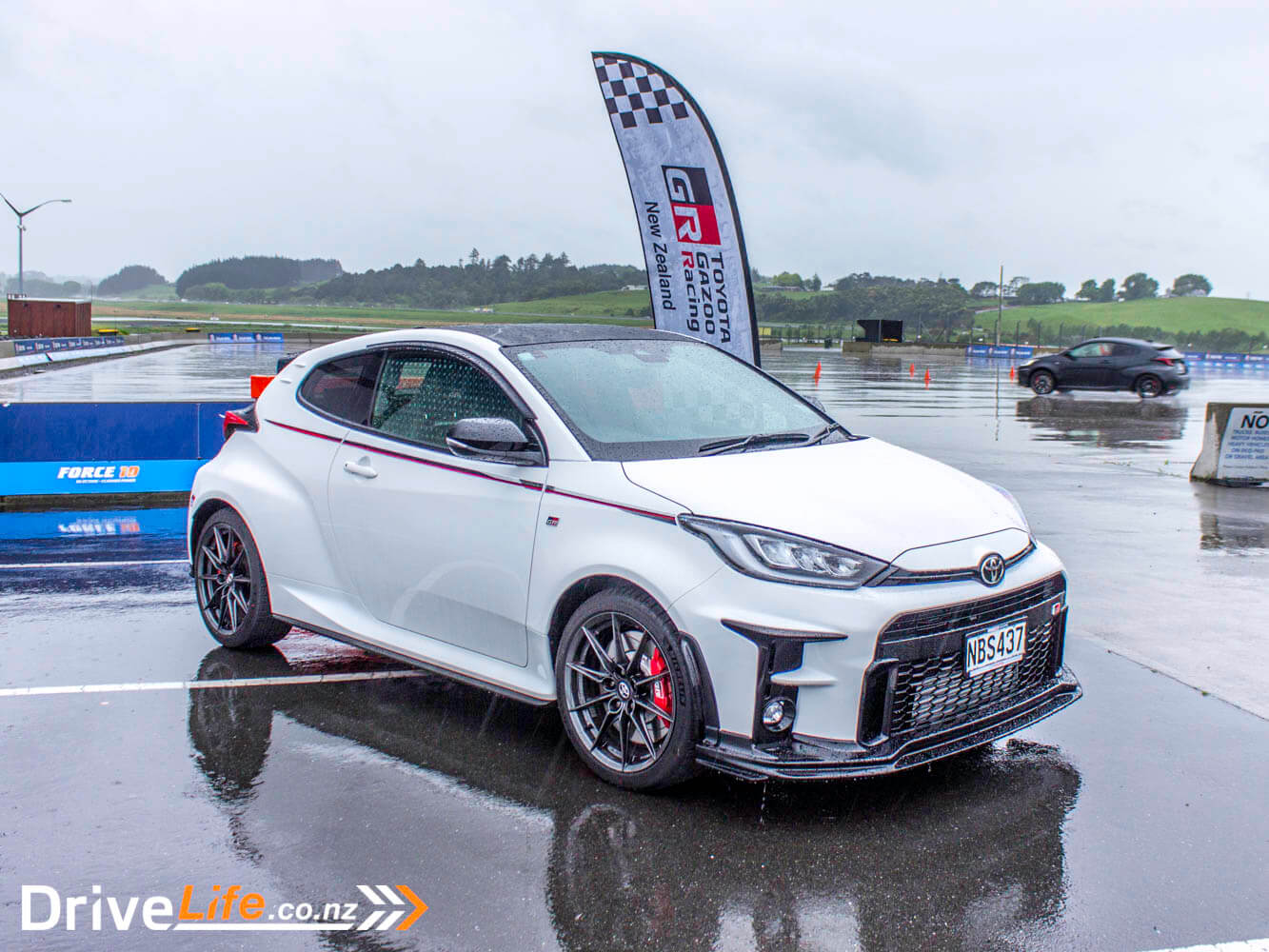
The new GR Yaris is the first every-day production car to be reverse engineered by Toyota from a pure motorsport car. That’s really saying something.
There are times when a car is wasted on New Zealand roads, as we never get to test out their true potential, or how they cope with much higher speeds. So with that in mind, Toyota invited us to Toyota’s race team headquarters at Hampton Downs Racetrack to spend some time with each model.
Unfortunately, the weather was not kind in Auckland, with almost torrential rain on the motorway as we headed to Hampton Downs. Still raining when we arrived, luckily the first part of the day was sitting listening to some facts and figures, as it continued to bucket down outside.
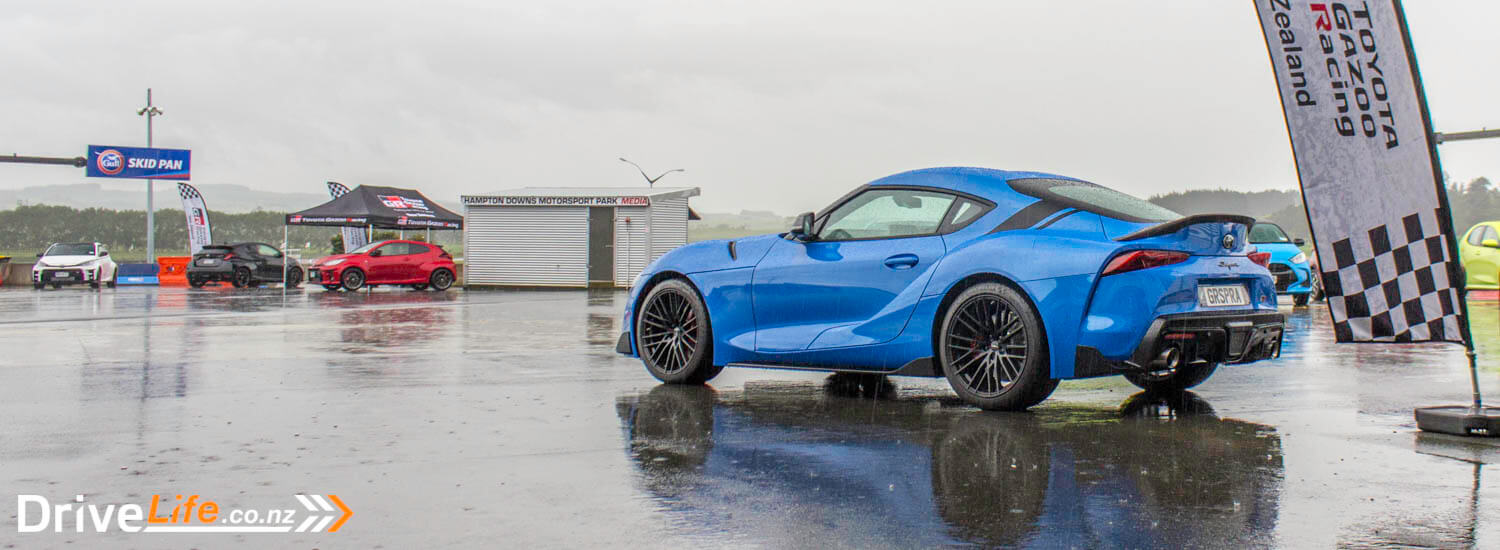
Toyota New Zealand’s (TNZ) CEO, Neeraj Lala, was first up to speak, and says that predictions are on track that new car sales for 2021 will increase 14% globally. Of course, with COVID, that wasn’t the case midyear, and Toyota lost 25% of new car sales in a week, meaning $500-$600m in lost revenue, mainly due to a huge drop in rental car sales. However, November is a major month for TNZ, with over 4000 orders on the first of the month, a figure they’ve never seen before. Neeraj says their fleet and government share of sales is growing, as is private sales.
Big news on the historic front is that this month TNZ was recognised as achieving 50 years in New Zealand. This would have been recognised internationally, but COVID put paid to that. Regardless, in 1966 Toyota New Zealand started with partners like Cable Price Toyota, importing completely knocked down (who remembers CKD?) units in Thames and Christchurch.
After the first 20 years, a new plant was built in Thames, and the name was officially changed to Toyota New Zealand.
Then, after 30 years, the Lexus brand was launched, New Zealand had an open market with no tariffs, which “completely changed the landscape for cars coming into New Zealand” Lala says. TNZ saw the intro of independent dealers, a dedicated customer support centre – the first motoring brand in New Zealand to do this.
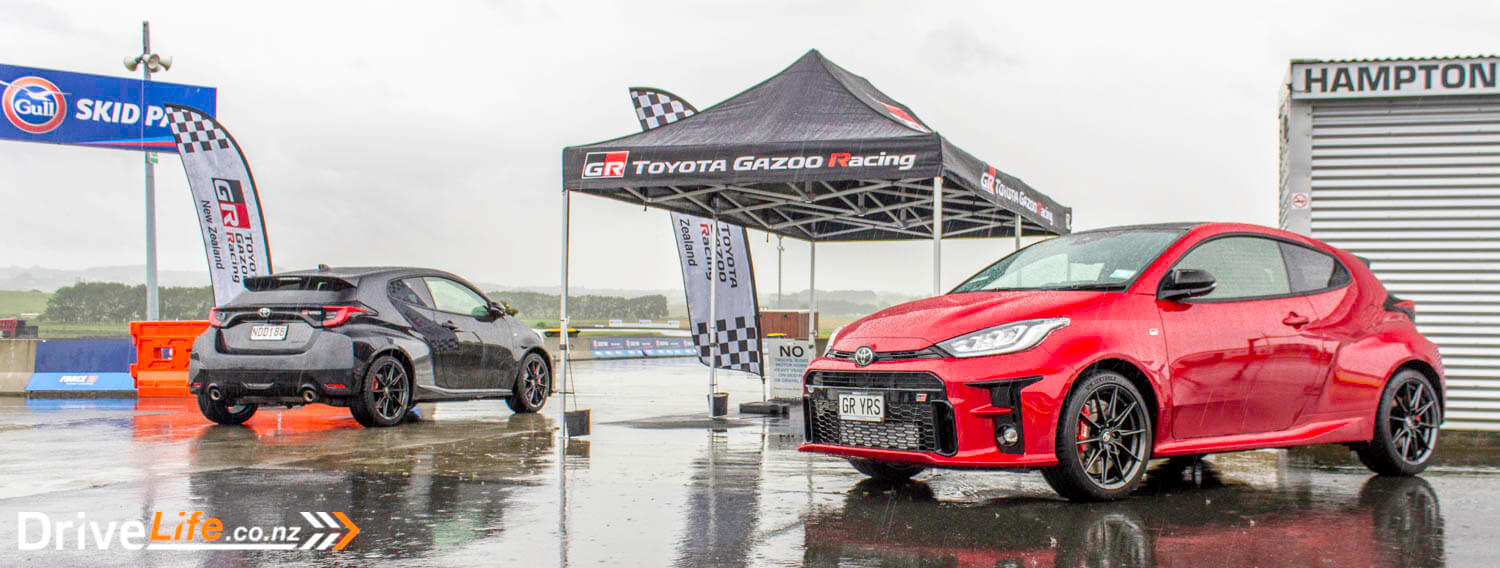
40 years on and Toyota Racing was launched, and Daihatsu introduced to our market. It also saw the painful closure of the assembly plants, and the Christchurch plant was sold. TNZ also sold their Wellington premises, and consolidated all their staff to the premises in Palmerston North. It was in this time that the Signature class was introduced.
And now they’ve hit 50 years. Their focus now is building relationships with their customers, and to change and transform the way customers could research cars, with much more based online, including virtual test drives. They’ve also introduced the Haggle Free pricing model.
“It’s been a long journey and we haven’t finished yet,” says Neeraj. They’ve had the luxury of 32 years of consecutive market leadership and are acutely aware of the risk of becoming complacent, he says. “We’ve been the hunted for 32 years, with the microscopes on us.” TNZ knows they are a target. In saying that, 1 of 4 cars on the road in New Zealand is a Toyota, and he claims they consistently feature highly in trusted brands surveys.

FUTURE
So what of the future for Toyota New Zealand? It’s the “Opportunity for innovation”, according to their CEO. “We want to move from being a car company to being a mobility company,” he says, and this includes using 5G going to allow them “to connect anything to everything”.
With the risk of complacency, Neeraj says “There’s a second area of danger for our products. We’re considered the best from a safety and reliability point of view, but we were moving away from being desirable or inspirational.”
But now, Toyota’s president is a ‘real car guy’, with a passion for cars and motorsports. He understands that improvements in cars competing in motorsports flows down to production cars. Part of this passion has included expanding the Gazoo racing series and team.

In New Zealand, this includes the Toyota Racing Series (TRS) which was first run in 2005, and has since seen a number of winners of this series go on to F2 and F1. TRS’ vision is “Find New Zealand’s next world champion”, and they’ve proven that this can be achieved.
The word Gazo comes from a Japanese word that means, essentially, ‘garage’. Perfectly fitting. The English translation has changed it slightly to Gazoo, and that’s the word that has stuck for Toyota.
There’s two arms to Gazoo Racing (GR). There’s a product arm (currently GR Supra and GR Yaris), while the second arm is the Toyota Racing Series and Toyota 86 Championship, which moved to Hampton Downs in 2017.
Andrew Davis, TNZ General Manager of Marketing and Motorsport, spoke about the FT60 racing series car, with its 285hp engine, that manages to cope with 19psi turbo boost pressure.
There’s just 8 international distributors for Gazoo products, and TNZ are obviously proud to have managed to become one of those eight.

GR YARIS
At last, we get to the GR Yaris. Neeraj makes an instant and bold claim; “the GR Yaris is a true rally car”, and then “it’s a fire-breathing track car for the road”. We shall see, but sure looks awesome, with that wide front stance, and even wider rear end. The car is 3-door only, manual only, and is all-wheel drive. With the pouring rain outside, we’re going to need AWD big time.
TNZ decided on bringing just the one model in, and it’s the top spec one. Interestingly, it runs the new TNG platform at the front of the car, but the rear platform is a Corolla, to give it that wider stance. At a price of $54,990 drive away, we can see this being a popular alternative to the i30N or Type R – especially since the GR Yaris is AWD, and the other two are FWD. Apparently TNZ has already sold the first 40 cars, and have orders with Japan to get more.
Those who think the GR Yaris is just a hotted-up standard Yaris should think again. It’s almost a completely different car, with only the headlights, tail lights and mirrors carried over from the ‘normal’ Yaris. Everything else has changed, and there’s been a huge focus on reducing weight, including fitting a carbon-fibre roof and aluminium body panels.
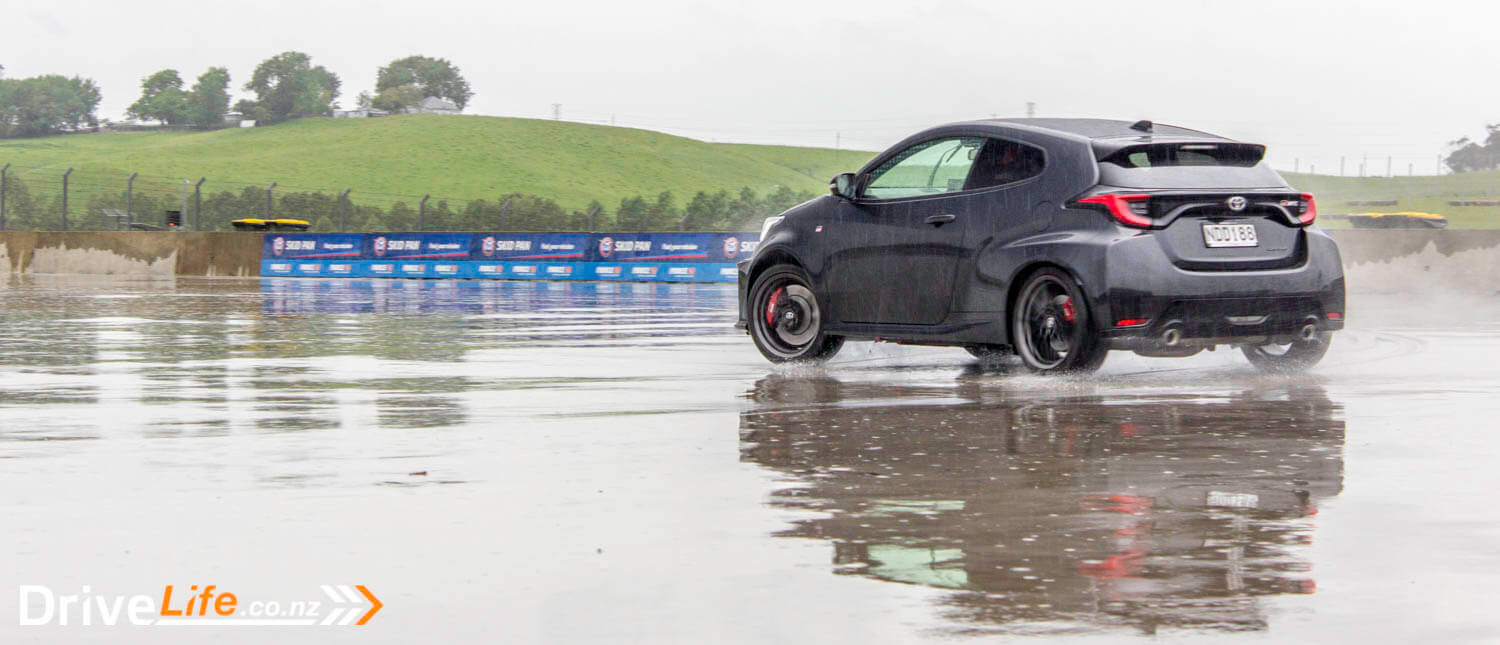
The car is custom-built in japan, with lots of hand building going on. There’s still automation, but there are times when the human touch is needed. In fact, the GR Yaris has its own, separate construction line and according to Toyota, each GR Yaris is built by a master craftsman one at a time.
TNZ says this is the first genuine all-wheel-drive Toyota sport car since the Celica GT Four, a much-loved Toyota if ever there was one. The GR Yaris has a lower roof line, is 55mm longer in the wheelbase, 55mm wider at front, 80mm at rear, and 100m wider overall than the standard Yaris.
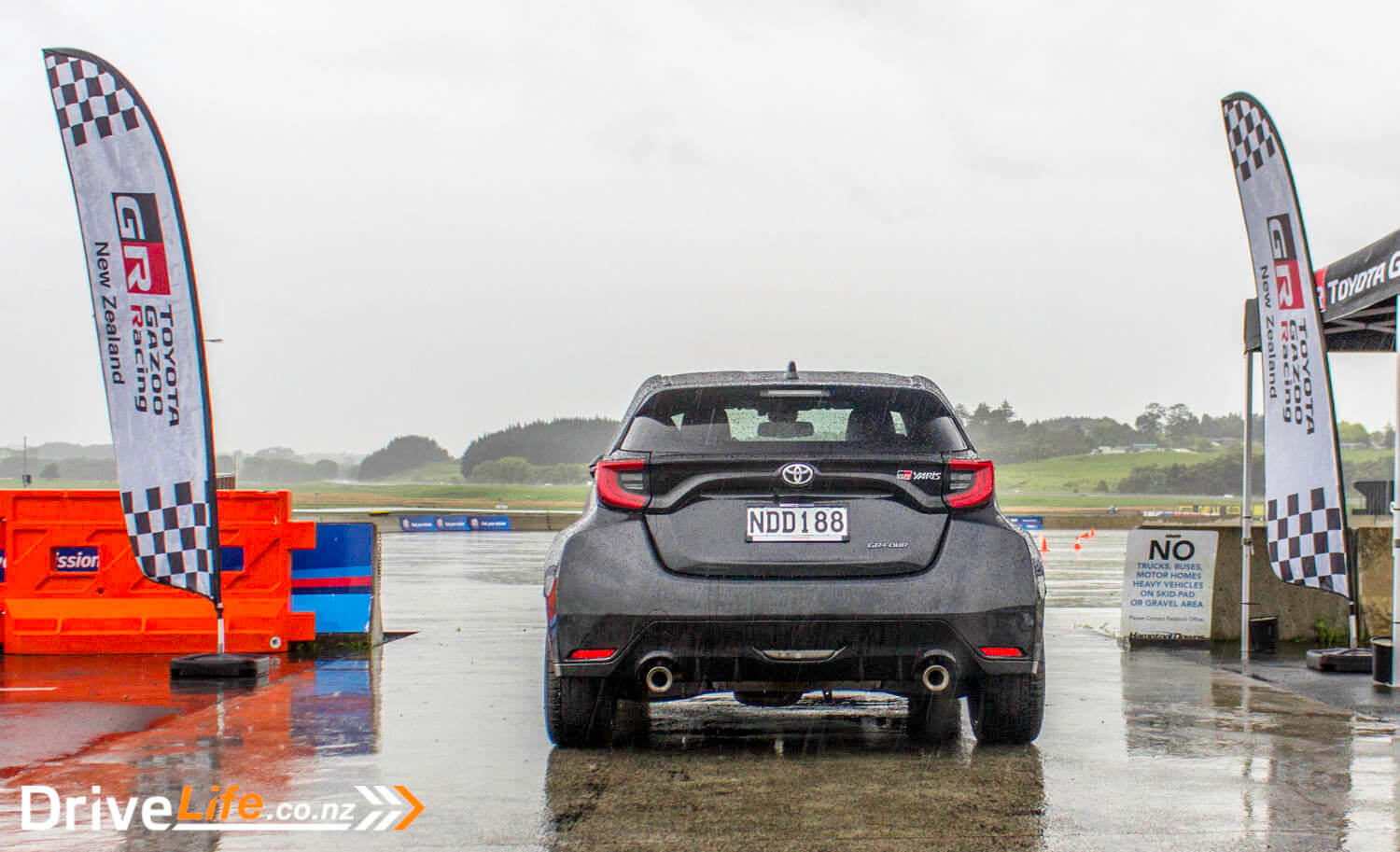
The headlights are reflective LED straight from Yaris, but other changes include a power bulge in the hood, and the world’s most powerful 3-cylinder engine, at 200kW of power.
There’s a sloping roof for better aerodynamics, and being carbon fibre, should be very light. Wheels are stunning forged alloys, 18” and a 10-spoke design from BBS, rolling on Michelin Pilot Sport 4S tyres. There’s slotted rotors up front, with bright red calipers on production models.
Moving to the rear, there’s those massive rear wheel arches, and dual exhausts at the back. Nice to see the GR Yaris has frameless doors, they never look bad on a car. Inside there’s minimal decoration, and GR branding on the seats, steering wheel and startup screen for example.
There’s also a short throw gearshift, and body-hugging suede seats. Of course, the handbrake is a manual one, no electric park brakes here.
As mentioned, the 1.6 litre, 3-cylinder engine manages to output 200kW of power at 6,500rpm, and 370Nm of torque at 3,000-4,600rpm and includes things like multi-oil jet piston cooling, large diameter exhaust valves, and a part-machined intake port. It gets to 100km/h in 5.2 seconds, and will get to 230km/h. Fuel economy, if you’re interested, is rated at 7.6L/100km.
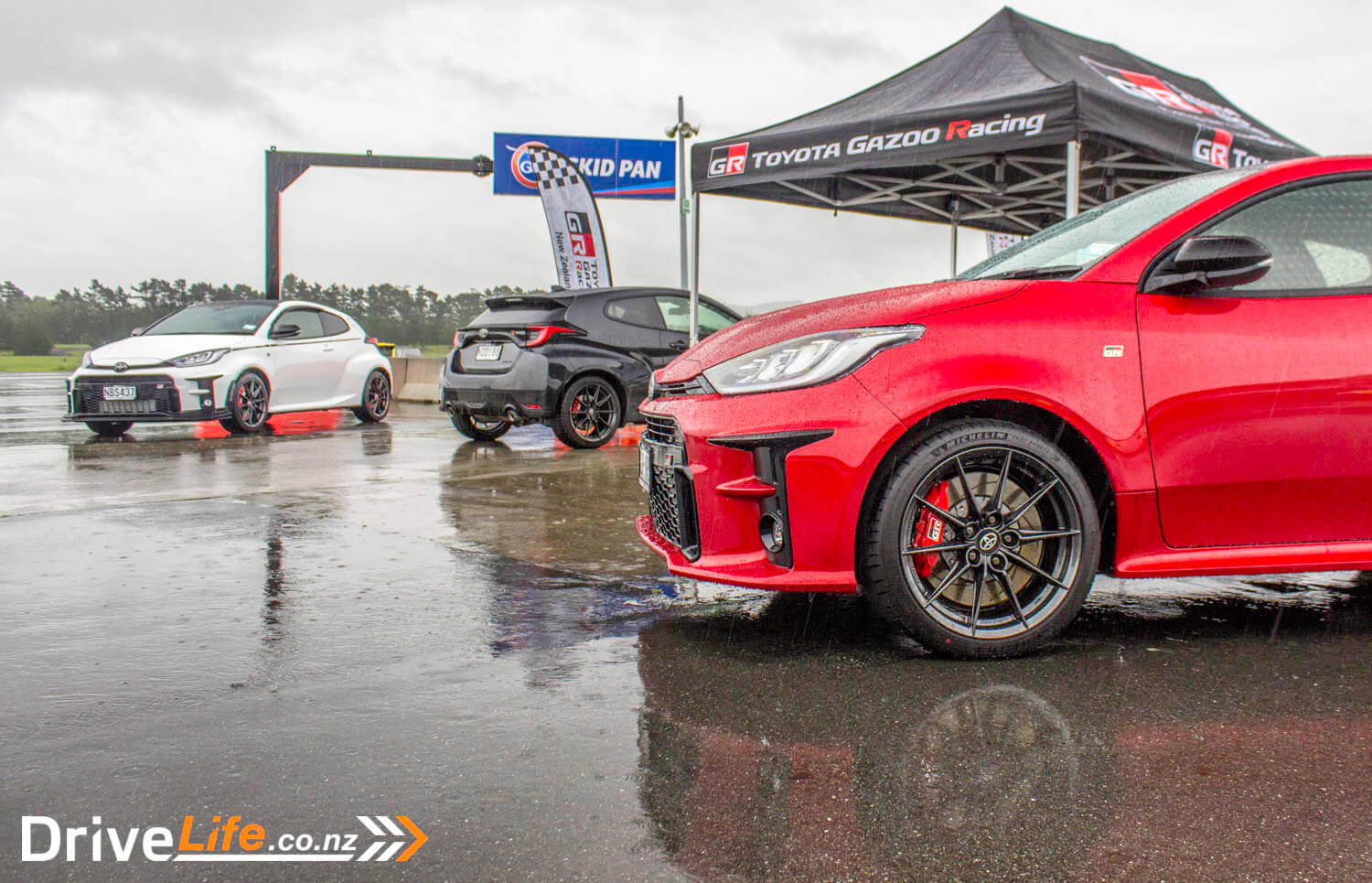
But it’s all about the power to weight ratio, with the GR Yaris listed at 0.156 kw/kg, very close to the Type R (but AWD), and more than a Kia Stinger GT. Front and rear diffs are both limited slip, and there’s a sophisticated torque distribution system using an electro-magnetic system to proportionally control drive to the rear wheels.
In the Normal drive mode, drive distribution is 60:40, in Sport it’s 30:70, and Track mode changes it to 50:50. There’s also a VSC mode button, which controls traction control. Holding down the VSC button down will make the car go into Expert mode. Like the Type R and i30N, there’s rev matching between gear changes.
Work has also gone into the clutch, meaning a consistent clutch feel even when it starts to wear naturally. It’s designed for a consistent feel over the course of its life.
All the suspension uses light-weight components, and there’s MacPherson strut front suspension, with trailing double wishbones at the rear. Brakes are 356mm four-pot calipers up front, and two-pot at the rear. Weight for the Yaris is listed at 1,280Kg.
Safety hasn’t been left out, with standard items like adaptive cruise control, traffic sign recognition, lane tracing, lane centering, auto high beams, and now Emergency Steering Assist to compensate for a driver oversteering a car in case of emergency
OTHER GR STUFF
There’s also a GR 86 to come, but no promises around selling this model in New Zealand. At the GR Yaris launch today, there was also a C-HR GR-S on display. This is a ‘performance and cosmetic’ GR model, so most of the changes are cosmetic, with the suspension and steering altered. The drivetrain remains the same. In future there will be more GR models, some of them with cosmetic changes only.
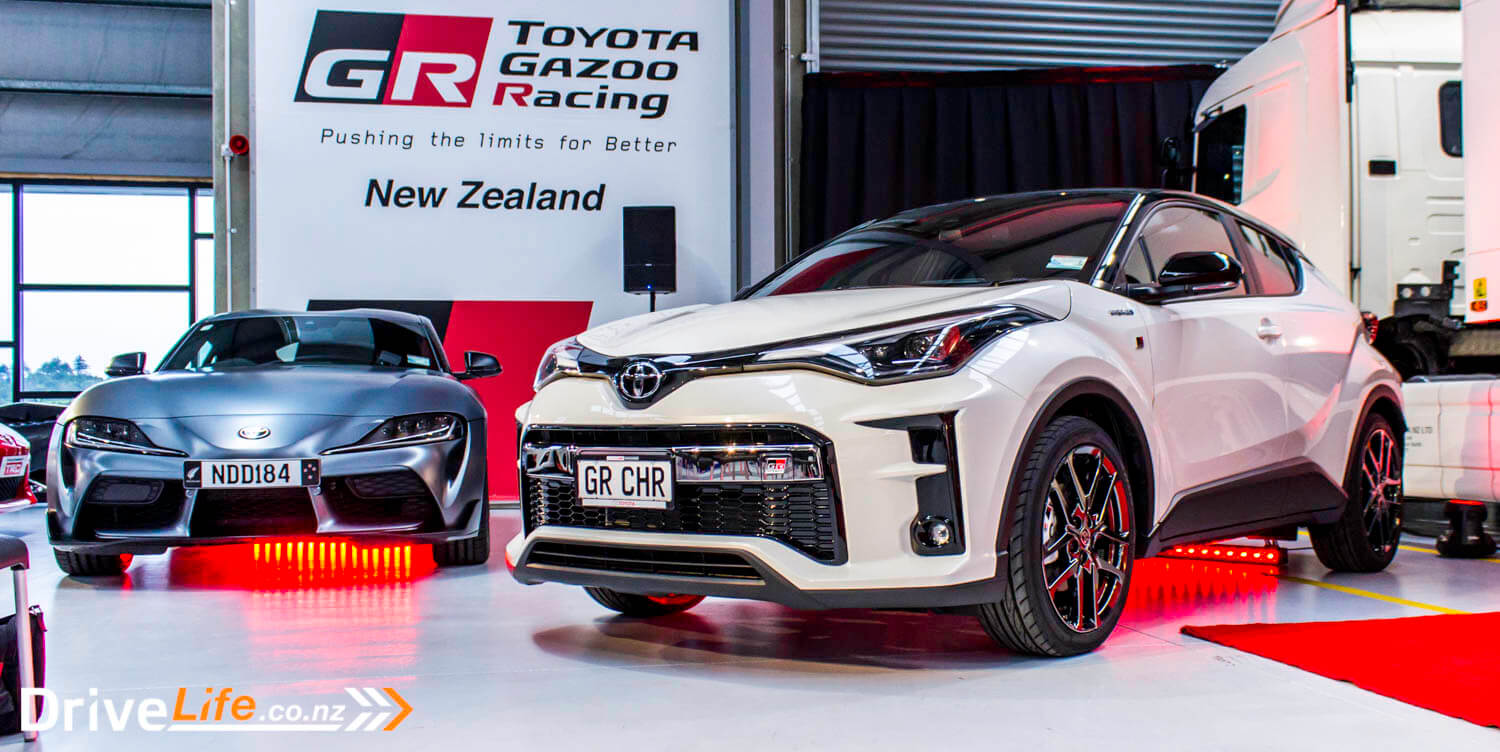
GR SUPRA
Of course we were here today to have a small sample of the new GR Supra. This model has a 35Kw increase over standard, and now puts out 285kW, meaning a 0-100km/h time of 4.1 seconds. There’s been exhaust manifold changes, and other cosmetic changes too. There’s some aluminium under-bonnet braces that tie to the strut towers for a handling and structural-rigidity improvement.
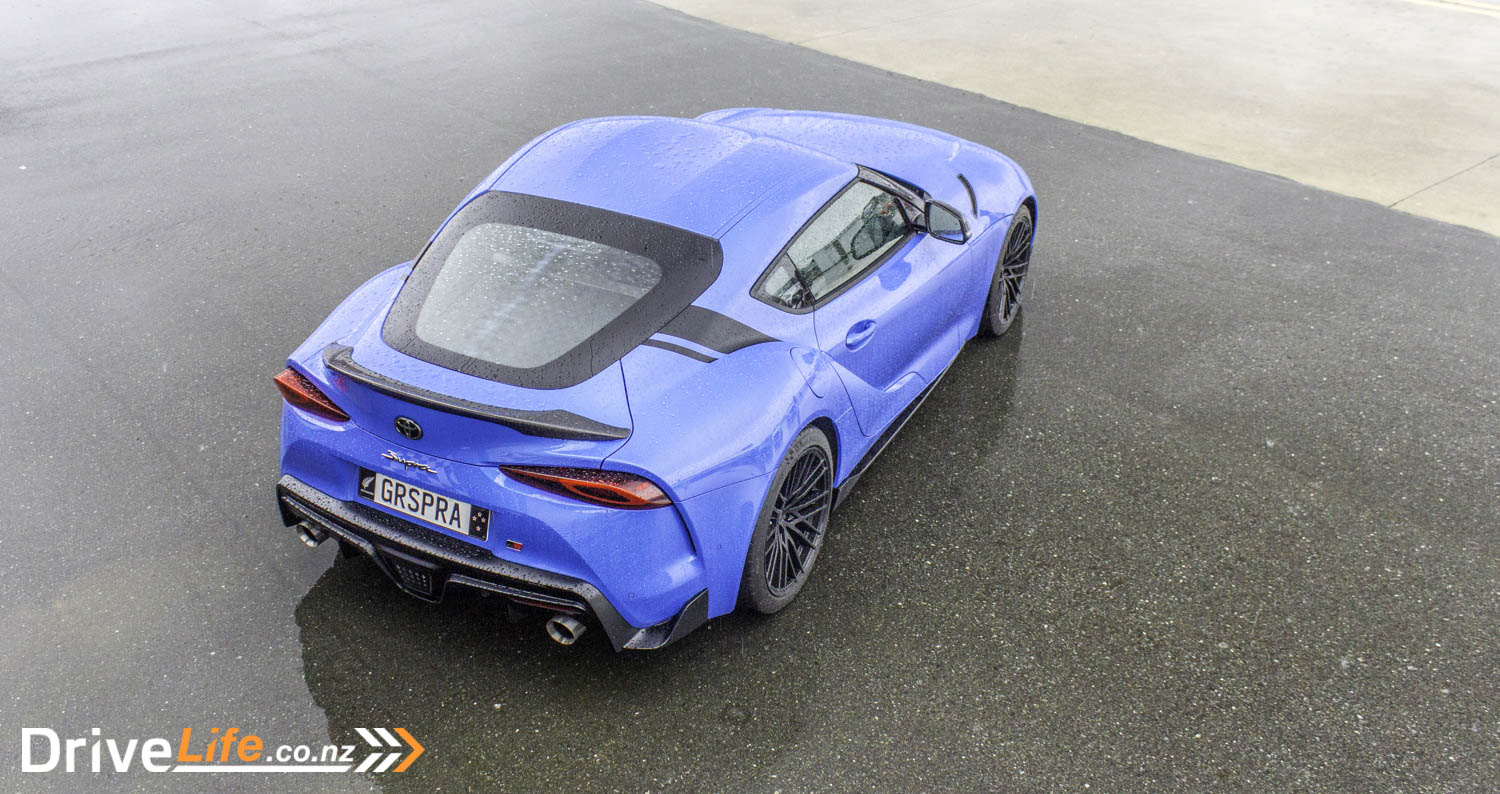
There’s also a new GR Supra Limited Edition model, available in an exclusive Horizon Blue colour matched to 19” matt black alloy wheels, different seats and other changes.
The new GR Supra weighs in at 1,570Kg, and is fitted with an 8-speed automatic. Maximum torque is 500Nm at a low 1,800rpm.
The GR Supra is priced at $98,990, while the Limited Edition model is just $1,000 more at $99,990.
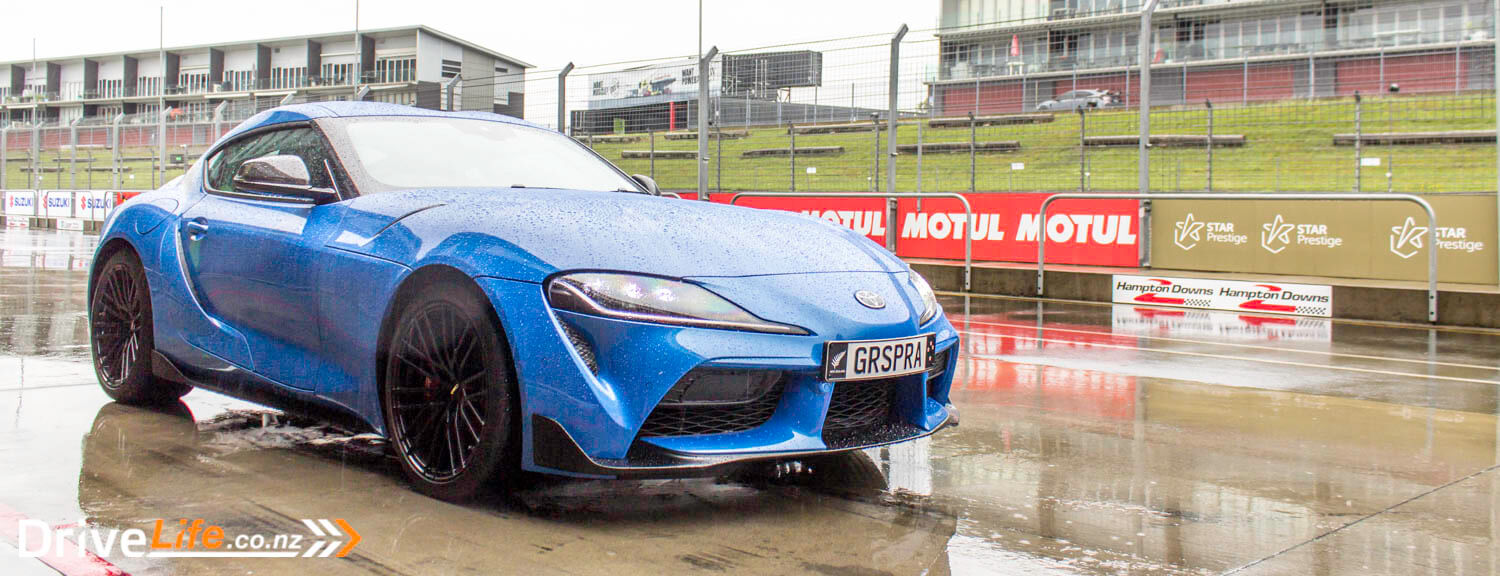
SKID PAN/TRACK PLAY
After all the talk, it was time to head to the skid pan to see how the GR Yaris handles no traction control, and a very wet pan. It did very well, although I think this was more a display of how to get the car sideways with the handbrake, which no one was complaining about. The noise from that 200kW triple was awesome, as it screams near the redline.
Once we had all cycled through the skid pan, it was a few laps with a professional driver around the Hampton Downs track, going through the gears needed for each corner, and checking out the apexes – thankfully marked with red cones for rookies like me.
I headed out as a passenger in the GR Yaris first, and again, it’s the sound that gets you. It’s a superb noise, as my driver Alex wound it out on the straights. It seems to do very well on the corners too, at least under a decent racing driver like she is.
A few minutes later, and I’m behind the wheel of the GR Yaris, making the most of the AWD grip. I still managed to get it sideways a few times, just taking corners too fast. That gearbox is a honey, short throws and perfect changes every time. Brakes felt good too, nice feel and not too much initial bite to throw you off. I enjoyed redlining it just to hear that motor. All too quickly, my few laps in the car are over, and it’s time to head into the pits.
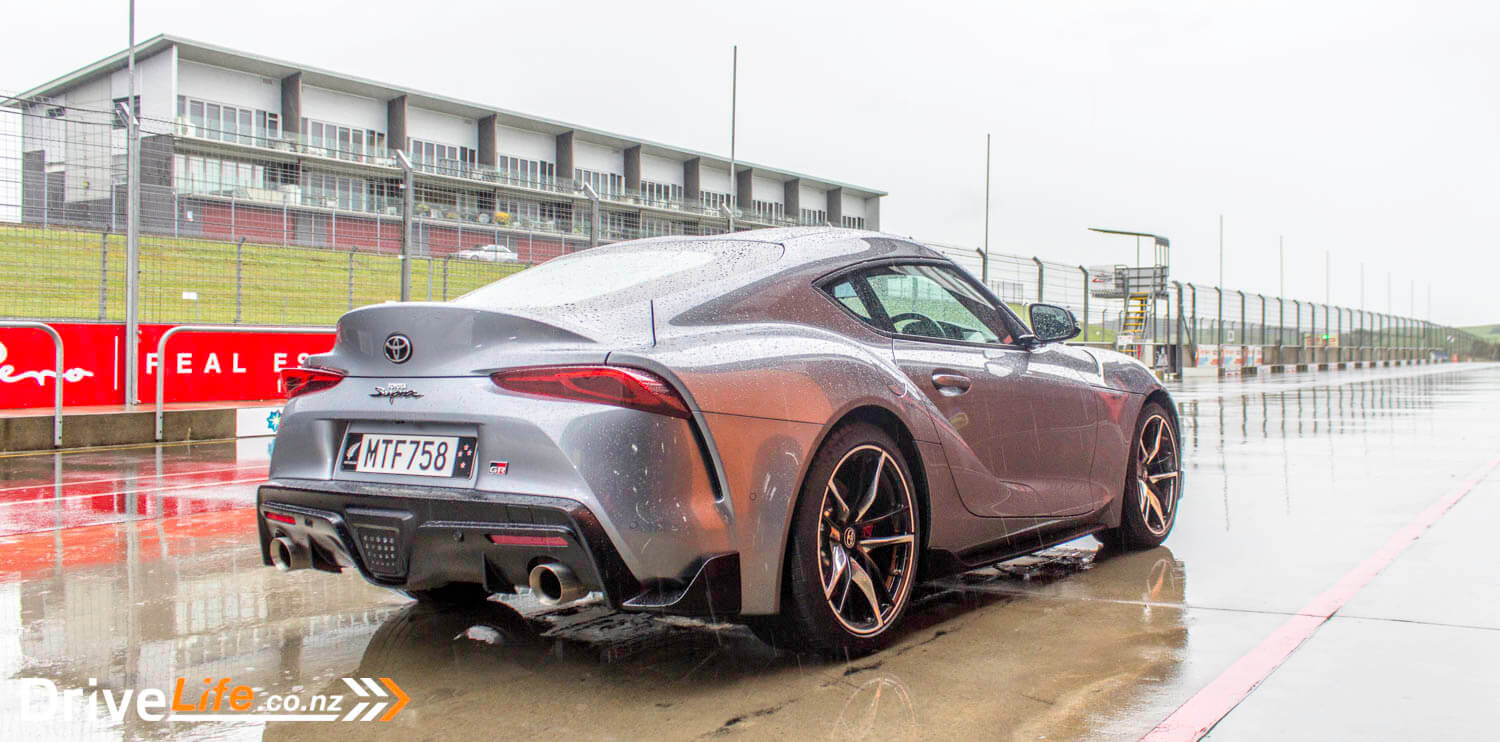
Now I can’t wait until we get this car to test it out fully, although I expect it needs a track to see its full potential.
After the GR, I got into the standard Supra for a drive. I’d not driven this car yet at all, and it’s pouring down. Not a good recipe. I tried to take it slowly, but of course it went too fast, and the lack of AWD meant I had traction control kicked in a few times. I think if I’d actually spent time behind the wheel before today – especially in the pouring rain – I would have had much better lap times. Still, the car is nice, it oversteers just before you lose it so you get some warning. The 3.0-litre straight-six turbo sings a nice tune. Not hard-out like the GR Yaris, but a tuned growl instead. I liked it. The car felt way heavier and way bigger than the GR Yaris, but that was to be expected.
Getting out of the standard Supra it was time to get in the GR model with its 35 extra kilowatts. There was no way we were going to make use of that extra power in this weather, but you could certainly feel it pushing harder on the straights. Is it worth the extra cash over the standard Supra? No doubt, and I’d love to test it out in the dry. Rear-wheel drive on a very wet track means you have to drive very smoothly all the time. That’s not a bad thing, but it doesn’t make it as much fun in a rare car that you don’t own.
And then the day was over. I thoroughly enjoyed driving all three cars, but there was one stand-out: First impressions say the GR Yaris is going to be simply excellent.
